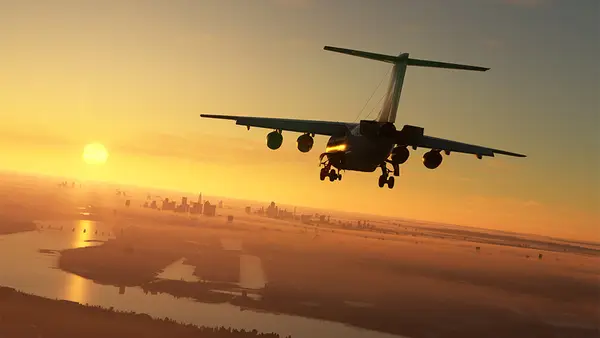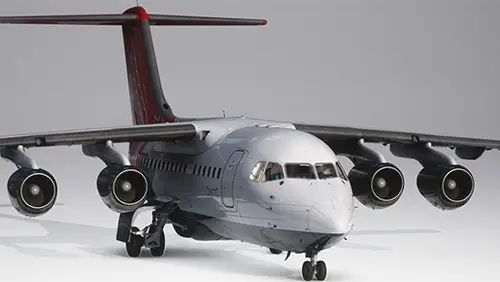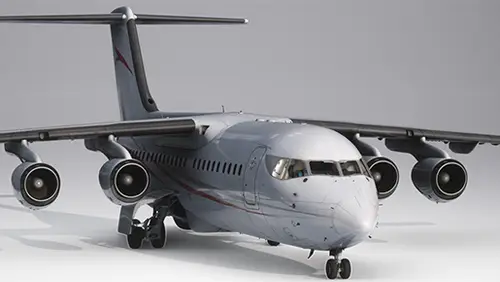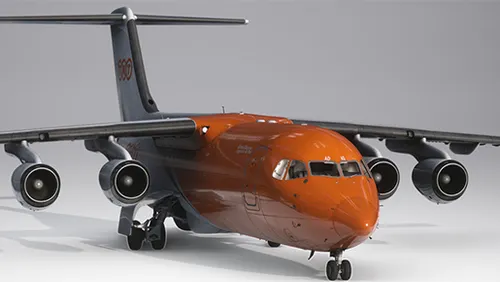- USD 69.99
- View more offers at FS Addon Compare
- Added: November 14, 2024
- Updated: September 8, 2025
Following on from their hugely popular 146 Professional for MSFS, the Just Flight in-house development team have created a high fidelity simulation of Britian’s last airliner, the RJ Professional. Just Flight are excited to bring you all three variants of the RJ family: the RJ70, RJ85 and RJ100, plus the semi-functional RJ100 QT Freighter variant. Each variant is fully custom coded and created using comprehensive, hands-on research with a real world aircraft, RJ-100 SE-RJI. First taking to the air in 1992, the RJ is a glass cockpit airliner equipped with an EFIS (Electronic Flight Instrument System), PED (Primary Engine Display), FADEC (Full Authority Digital Engine Control) and FMS (Flight Management System). A generational leap in capability from the 146 it succeeded.
Model
- Accurately modelled RJ70, RJ85, RJ100 and RJ100 QT variants, built using extensive research material and hands-on experience with the real aircraft
- Numerous animations, including flaps, lift spoilers and airbrakes, all cockpit, passenger, service and cargo doors, integral airstairs, windscreen wipers
- Custom modelled ground equipment
- Highly detailed and fully simulated passenger cabin and galleys customised for each RJ variant
- 4K and 8K PBR textures are used to produce the highest possible texture clarity
- Highly immersive interior and exterior lighting, including dimmable and moveable cockpit lights
- Over 30 liveries included, each with custom cabin textures
Cockpit
- Captain and First Officer positions are modelled with hundreds of functional switches, knobs and controls
- 3D cockpit environment right down to accurately modelled seat belts and screw heads, and CRT display curves
- Textures feature wear and tear based on reference photos of the real aircraft to produce an authentic environment
- Tablet EFB for controlling aircraft options, fuel/payload, flight planning, and SimBrief and Navigraph Charts support
- Aircraft configuration system with options to choose between “Cold & Dark”, “Turnaround”, or “Ready for Take-off” states
- Developed using the latest MSFS standards, including intuitive and easy-to-use controls for rotary knobs, multi-position switches and levers, and VR support
- A variety of showcase camera presets, including wing views
Custom-coded aircraft systems
- Electrical system with generators, busbars, inverters and AC/DC power supplies
- Hydraulic systems, including independent Yellow and Green systems
- Flight control system with servo-tab simulation, iconic tail-mounted airbrakes, stick shaker
- Auto-flight system with various pitch and roll modes, including CAT 3 autoland capability
- Power plant systems with realistic engine starting procedures
- Thrust Rating Panel (TRP) with Takeoff (MAX or REDU), Maximum Continuous Thrust (MCT), and CLIMB MAX or CLIMB NORM modes
- FADEC with autothrottle and TRP integration
- GNLU-910A FMS with manual flight plan entry and Simbrief import functionality
- EFIS PFD and ND display integration with all other systems
- Dual IRS with realistic alignment times that vary depending on the aircraft’s latitude
- Fuel system with realistic fuel load and burn based on real-world data, fuel transfer, pumps and optional auxiliary tanks
- Communication system with dual VHF COMM, NAV and ADF radios, with 8.33kHz spacing support, and transponder with TCAS
- Realistic flight dynamics based on real world data and input from RJ pilots
- And many more, including air-con and pressurisation, pneumatic and ice systems
Sounds
- Native (Wwise) sound package taking full advantage of the new MSFS capabilities
- Studio quality LF-507 engine noise recorded from the real aircraft
- Over 450 flight deck sound effects recorded from the real aircraft
- Pilot and cabin announcements, including co-pilot callouts
- Detailed equipment audio such as the APU, brake fans, electrical circuits, hydraulic equipment, flap howl and many more
































































